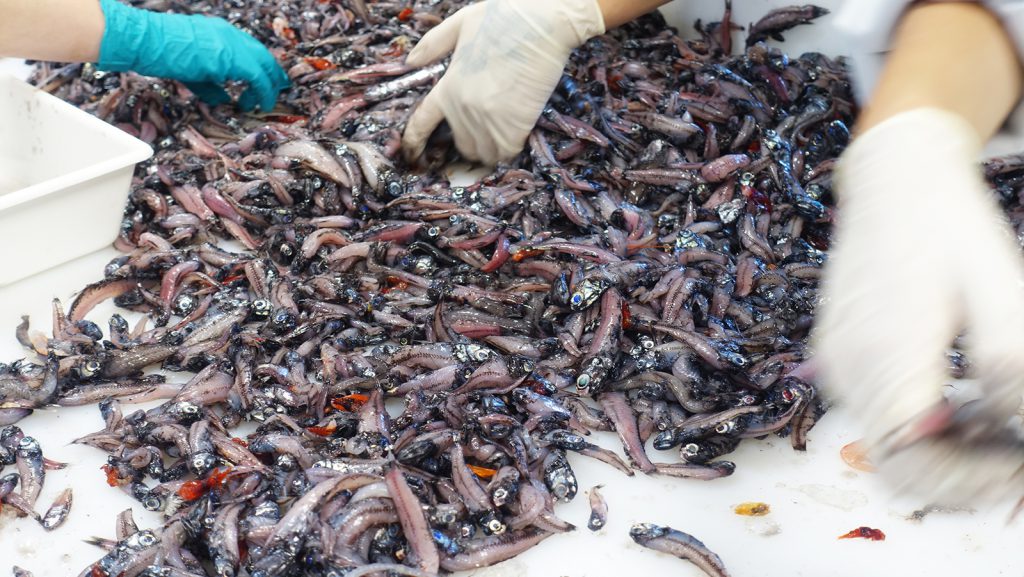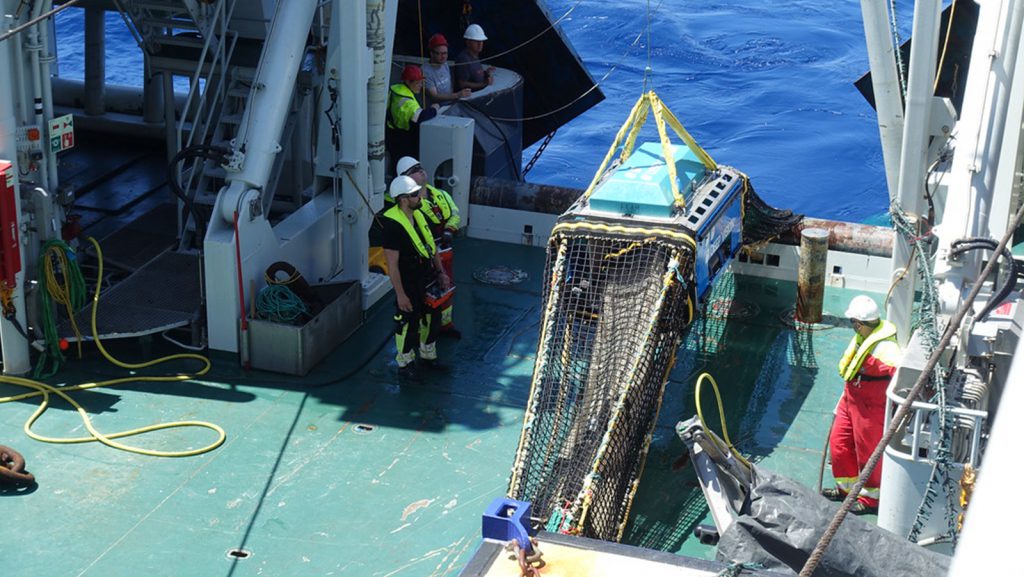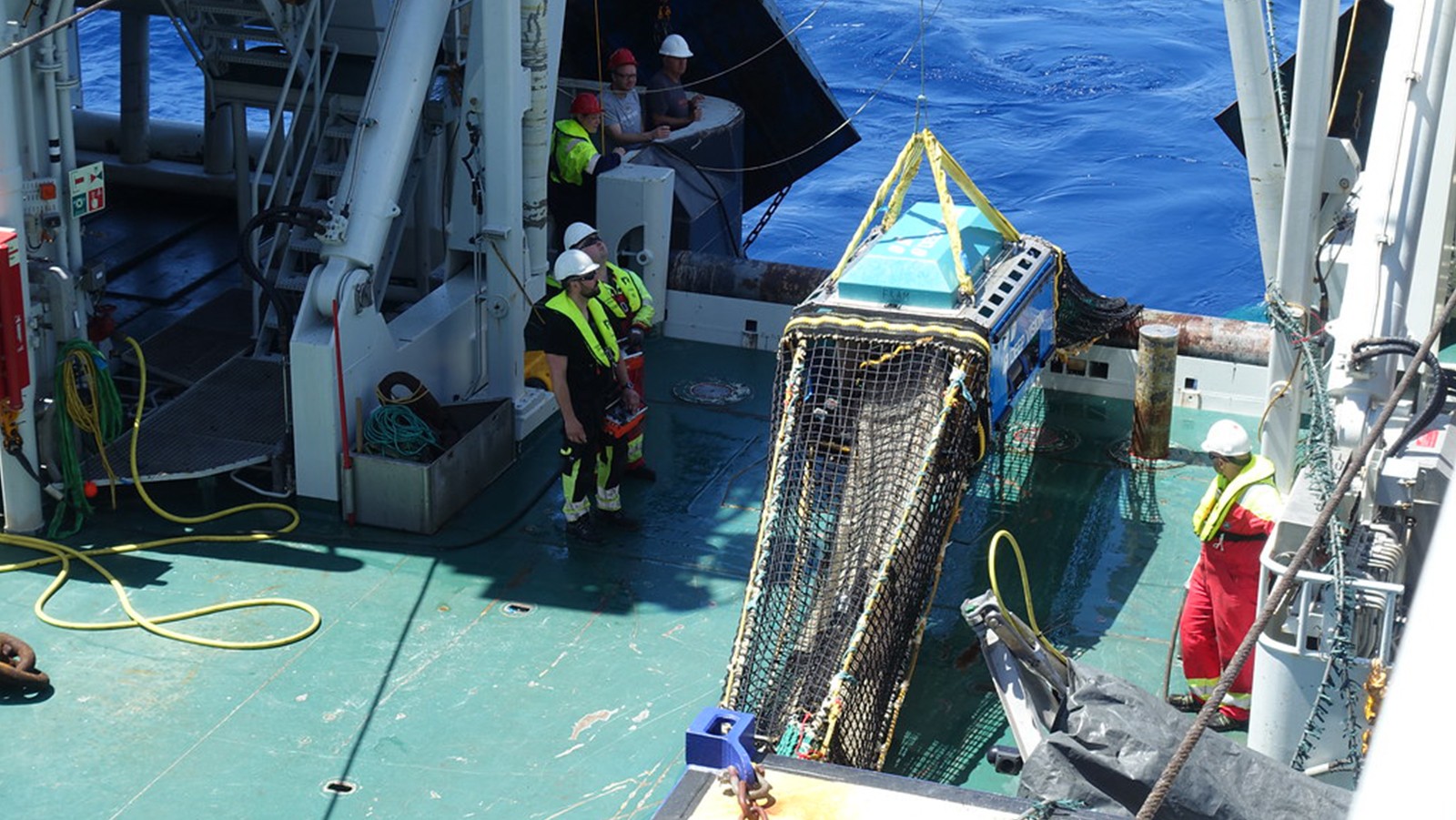Dr. Luke Thompson, a Northern Gulf Institute Assistant Research Professor at AOML, sailed aboard the Norwegian icebreaker RV Kronprins Haakon in May as part of a research effort focused on characterizing species that dwell in the mesopelagic zone—the region of the ocean 200–1000 meters below the surface. The cruise was undertaken to explore the potential for developing a new fishery based on mesopelagic fish.
Recent estimates of the fish biomass in the dimly-lit mesopelagic “twilight” zone range from between 2–50 billion tonnes, making fish in this layer the most abundant in the global ocean. This untapped resource has attracted the attention and interest of the commercial fishing industry, as well as marine fish feed producers. However, research is needed to better understand the ecological impacts and consequences to the mesopelagic ecosystem (and broader ocean) from harvesting its resources.
Scientists aboard the Kronprins Haakon conducted the month–long survey to study the mesopelagic ecosystem, with an emphasis on quantifying the abundance, diversity, and biomass of mesopelagic species in both nutrient poor and nutrient rich waters. The cruise began in Mindelo, Cape Verde off the west coast of Africa and passed through the Canary Islands and northeast Atlantic before ending in Oslo, Norway. Data gathered along the cruise track measured the physical, chemical, and biological properties of the ocean, while acoustics and trawling operations focused on gathering mesopelagic specimens for taxonomic identification of fish, cephalopods, and crustaceans.

Dr. Thompson participated in the cruise as part of a bilateral US–Norway project to use environmental DNA, or eDNA, to study the mesopelagic environment. The joint project resulted from meetings of a US–Norway intergovernmental group on eDNA implementation for fisheries stock assessments and management led by AOML molecular biologist Dr. Kelly Goodwin and representatives from the Norwegian Institute of Marine Research.
The NOAA–Institute of Marine Research team tested the use of eDNA to characterize a potential new fishery in the mesopelagic layer. Their objective was to identify as many species as possible from the water column using eDNA sequencing and to compare the taxonomic distribution and abundance of fish species in the eDNA data with those from the traditional trawl and acoustics data collected during the cruise.
Dr. Thompson and his Norway-based Institute of Marine Research counterpart, Dr. Lotta Lindblom, filtered eDNA from water taken from depths with strong acoustic signatures (scattering layers). Mindful of the importance of expanding eDNA reference databases, they also collected fish specimens for mitochondrial DNA sequencing. Samples from 122 fish species were frozen or stored in ethanol for later DNA sequencing analysis.
The eDNA species tables will be compared with species composition tables derived from the fish and macroplankton trawls. The high-quality taxonomic identifications from the trawl data make this a valuable dataset for comparison with eDNA data. Additionally, acoustic data were used to determine the fish groups that travel upward through the water column after dusk to feed on plankton, while eDNA data were, in turn, used to identify the scattering layers of migrating fish in the acoustics data.

Analysis of the eDNA samples will be conducted through NOAA’s Omics Program. Drs. Thompson and Goodwin and their Norwegian colleagues are excited to see how eDNA can be used to benefit fisheries investigations in the coming years.
